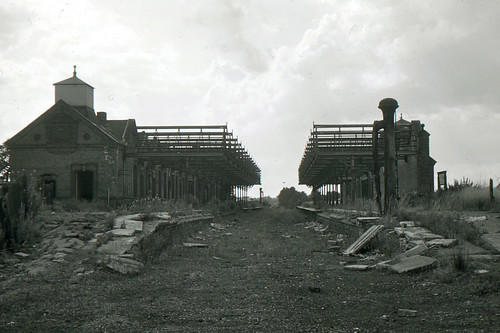Other Relatives
As mentioned at the beginning of the website, there are several generations of my family that worked on the railways. We all worked in the same region even if the company name has changed over the years.
In 1846 London & North Western Railway was formed and was the largest railway company in Britain. It built its own rolling stock and locomotives at three major centres. The locomotives were built at Crewe, wagons were built at Earlstown and carriages were built at Wolverton including carriages for the Royal Family. The older ones are at the National Railway Museum in York.
The current one is kept and maintained at Wolverton and is shown being shunted out to be made ready for its journey.
After the first world war the railways were worn out and beginning to suffer from competition from road traffic. The government forced all Railway companies to merge into four large groups from January 1st 1923 to LMS, LNER, GWR and SR.
Information collected from www.lnwrs.org.uk
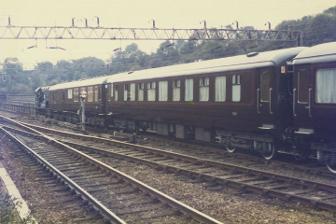
The Royal Train, Wolverton. photo ©F.Cheevers
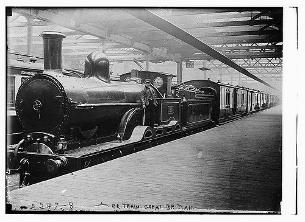
L&NWR train at London Euston 1926
Railway time was the standardised time arrangement first applied by the Great Western Railway in England in November 1840, the first recorded occassion when different local times were synchronised and a single standard time applied. Railway time was progressively taken up by all railway companies in Great Britain over the following two or three years. The schedules by which trains were organised and the times station clocks displayed was brought in line with the local time for London or "London Time", the time set at Greenwich by the Royal Observatory, which was already widely known as Greenwich Mean Time (GMT).
In the 1901 census My Great, Great Uncle John Robert Clarke was living at home in Blisworth and working as a Railway Painter.
He must have enlisted in the army and done three years service before rejoining LNWR at Peterborough as a Porter Brakesman in 1905.
He was promoted to Porter Guard in 1909 then went to Melton Mowbray as a Passenger Guard in 1913.
John Robert Clarke is registered in the Staff Records at www.lnwrs.org.uk and also honoured for his efforts in WW1. John Robert was called up from the reserves and was Pte J. Clarke of "D" Co. 2nd Suffolk Regiment. He was taken Prisoner of War in 1914 in Doberitz which is outside Berlin(Germany), he was then sent to work in the mines in Latvia for the Germans where he died in 1917 and is buried in a small commonwealth cemetery,
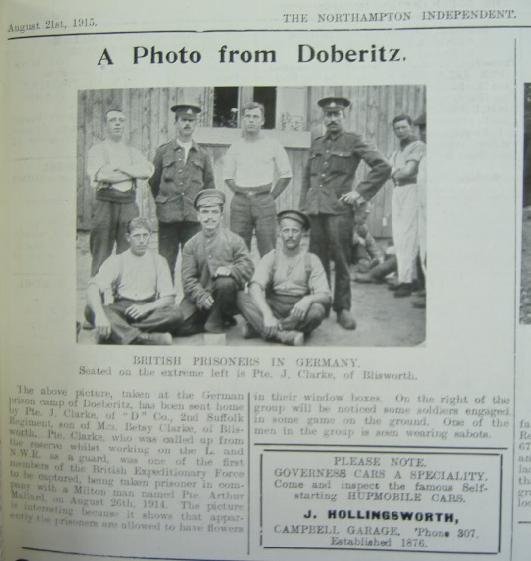
Pte J. Clarke lower left. Newspaper cutting from S.E.Clarke.
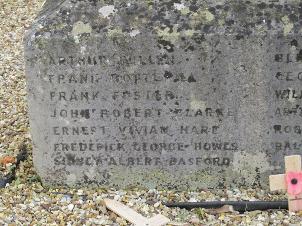
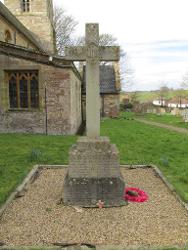
As a Guard he was in charge of the train – not the driver. It was he who waved the green flag to authorise the train to leave and whom protected the train in case of emergency. He sat in a special compartment with a large hand brake and other braking equipment to control the train. Guards’ compartments generally had a projection from each side, where the guard could sit safe and protected but with a view all along the train; most also included space for luggage. In early days some had a ‘dog box’, recognisable by the ventilation slats on the sides, low down at one end.
The guard was equipped with red and green flags and detonators . Should the train stop in section between signals or become parted if couplings broke, the Rules told the guard to walk back and place detonators (explosive caps) on the line to protect the rear of the train. Any following train would explode the caps and would make an emergency stop.
LNWR uniforms early 1900's
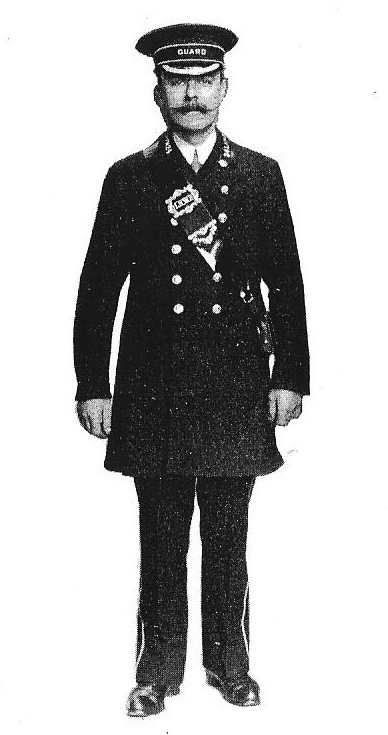
1900's LNWR Guards uniform

1900's LNWR Porters Uniform
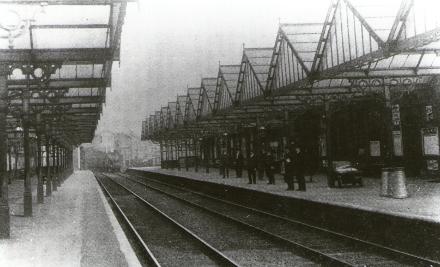
Melton Mowbray North ©Peter Smith www.systonandpeterborough.info
My Great Uncle John Alfred Clarke was a Railway Ganger at Blisworth and when he married his father-in-law was a Goods Guard at Tiffield where there was a munitions factory.
My Great Grandfather Alfred Henry Clarke was a Railway Ganger at Blisworth and would have been part of a 'gang' with a 'ganger' in charge and a 'flagman' was positioned up the track armed with a flag and a horn to warn the 'gang' of approaching trains.
Railway Gangers did the hard manual work of repairing or adjusting a length of faulty track for example track on curves tend to drift outwards due to the force of the wagons passing through and has to be levered back into line. Track that had settled too deeply into the ballast had to be lifted and the ballast shoveled back underneath it, worn or damaged lengths of rail needed replacing and embankments eroded by rain had to be shored up.
They had no uniform but wore shirts without collars and a scarf was often wrapped round the neck and tucked down the front of the jacket. Flat caps were usually worn only a few men went bare headed. In cold or wet weather the men wore long overcoats that reached below the knee. They also tied string around the trouser leg just below the knee to stop dust from blowing inside.
A Railway Painters job would have been to help with the upkeep of the station and would mix his paint in a bucket as required. At that time white lead paint mixed with linseed oil and turpentine was added to the bucket and the pigment added just prior to painting. A lot of browns and beiges where used as the brown pigment was the cheapest. White paint overtime would have a yellowish tinge where the linseed oil came through.
The role of Porter was commonly given additional responsibilities, especially at rural stations where there were relatively few staff. The responsibility of porters varied significantly depending upon the size and location of the station but would include things like luggage, assisting passengers, labeling parcels/goods, loading trains, cleaning, closing carriage doors, attending to oil lamps and so on.
A Guard’s role was to manage the train – giving the right of way to the driver when the train was ready to depart the station or depot. A Porter at a station was sometimes given these responsibilities instead of the Guard and was responsible for the shunting and movements of trains within the area of the station or goods depot.
The role of the Breaksman was more specific, operating the breaks on wagons and carriage stock being shunted in and around a station or yard.
A Goods Guard , also known as a freight guard, or goods brakesman, worked on goods, ballast, or mineral trains, either main or branch line, or in a yard or siding. He was responsible for seeing that packages, or full trucks for foreign lines were delivered or uncoupled at transhipment stations. He sometimes also did the work of a train preparer.
©SJBrown
